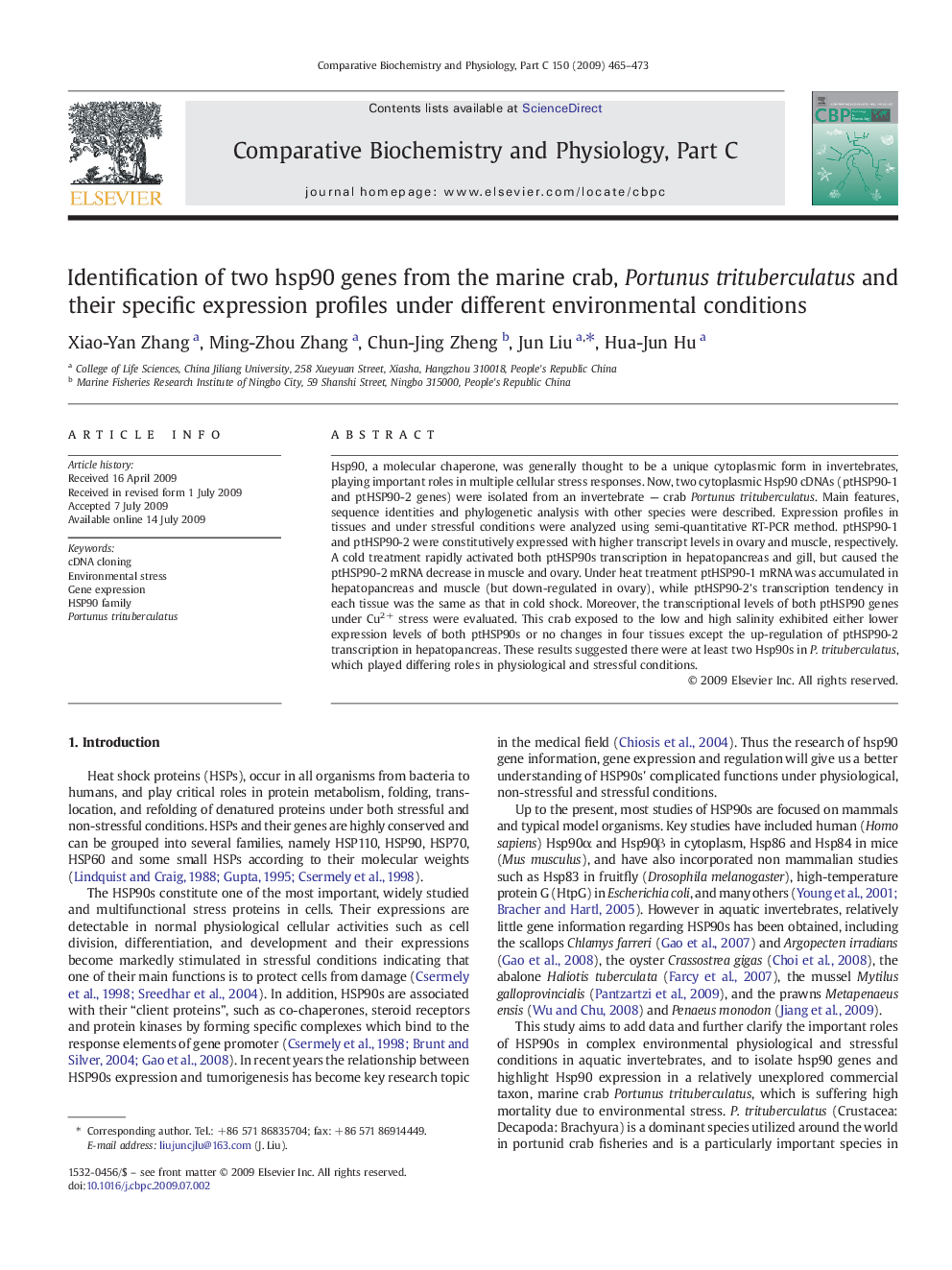| Article ID | Journal | Published Year | Pages | File Type |
|---|---|---|---|---|
| 1977718 | Comparative Biochemistry and Physiology Part C: Toxicology & Pharmacology | 2009 | 9 Pages |
Hsp90, a molecular chaperone, was generally thought to be a unique cytoplasmic form in invertebrates, playing important roles in multiple cellular stress responses. Now, two cytoplasmic Hsp90 cDNAs (ptHSP90-1 and ptHSP90-2 genes) were isolated from an invertebrate — crab Portunus trituberculatus. Main features, sequence identities and phylogenetic analysis with other species were described. Expression profiles in tissues and under stressful conditions were analyzed using semi-quantitative RT-PCR method. ptHSP90-1 and ptHSP90-2 were constitutively expressed with higher transcript levels in ovary and muscle, respectively. A cold treatment rapidly activated both ptHSP90s transcription in hepatopancreas and gill, but caused the ptHSP90-2 mRNA decrease in muscle and ovary. Under heat treatment ptHSP90-1 mRNA was accumulated in hepatopancreas and muscle (but down-regulated in ovary), while ptHSP90-2's transcription tendency in each tissue was the same as that in cold shock. Moreover, the transcriptional levels of both ptHSP90 genes under Cu2+ stress were evaluated. This crab exposed to the low and high salinity exhibited either lower expression levels of both ptHSP90s or no changes in four tissues except the up-regulation of ptHSP90-2 transcription in hepatopancreas. These results suggested there were at least two Hsp90s in P. trituberculatus, which played differing roles in physiological and stressful conditions.
